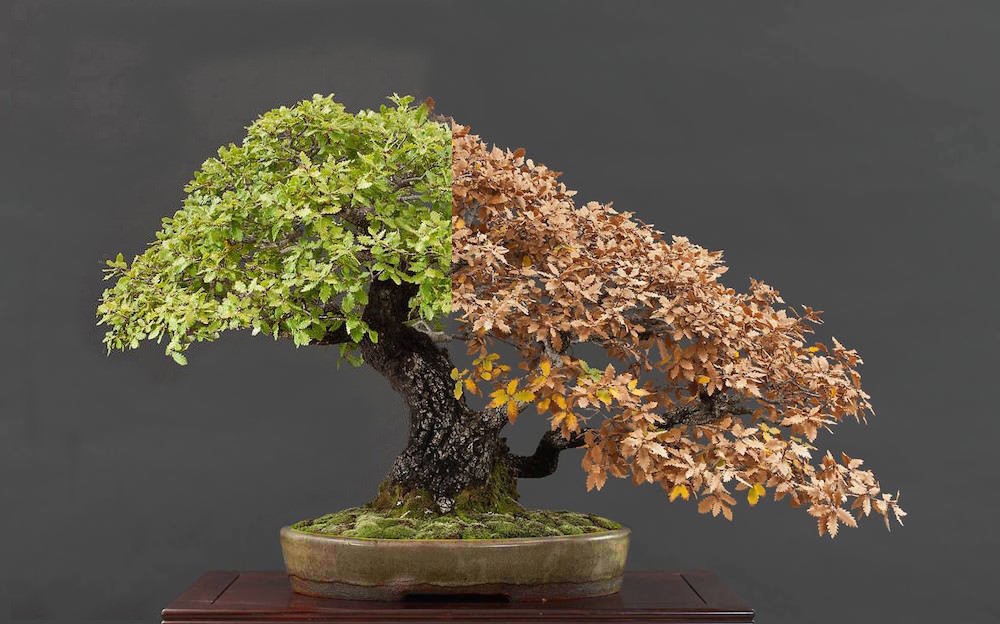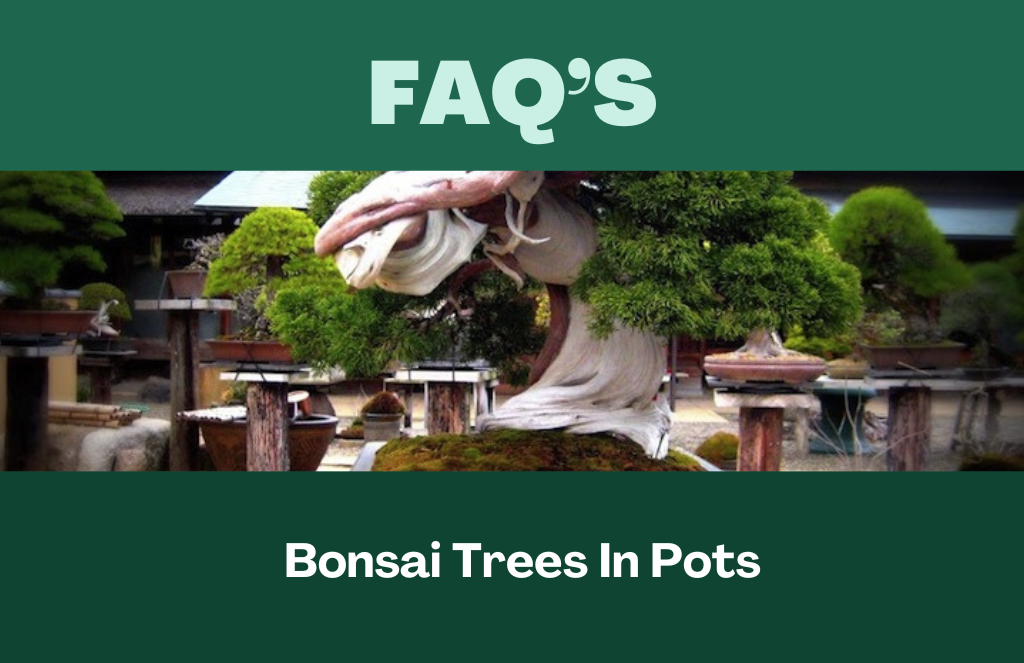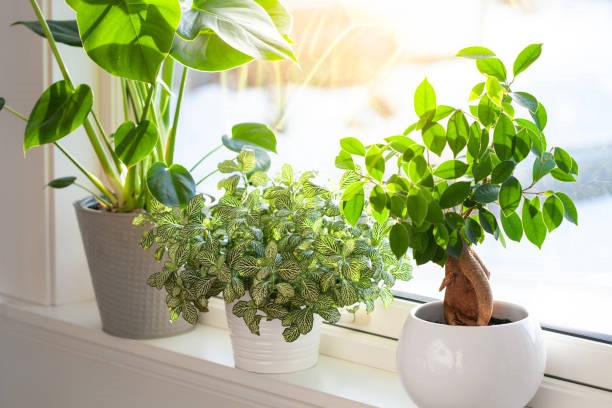Best Bonsai Tree Pots Guide
Looking for the best bonsai tree pots guide? Find everything you need to know right here. Bonsai trees require specific pots to thrive and showcase their beauty. The right pot size, material, and design directly impact the overall health and appearance of your bonsai.
In this comprehensive guide, we will discuss the different types of bonsai tree pots available, their advantages and disadvantages, how to choose the perfect pot for your bonsai, and essential care tips to ensure your bonsai thrives in its new home.
Whether you are a beginner or an experienced bonsai enthusiast, this guide will help you make informed decisions when it comes to selecting the best bonsai tree pots for your precious miniature trees.
What Factors To Consider For The Perfect Bonsai Pot?
Choosing the right pot for your bonsai tree is a crucial step in its proper care and cultivation. The perfect bonsai pot not only serves as a functional container but also adds to the overall aesthetics of your tree.
Material: Different Materials And Their Advantages
When it comes to bonsai pots, there are various materials available, each with its own unique advantages. The choice of material depends on the specific needs of your bonsai tree and your personal preference.
| Material | Advantages |
| Clay/Ceramic | ● Excellent drainage
● Promotes root growth ● Retains moisture ● Naturally beautiful appearance |
| Plastic | ● Lightweight and easy to move
● Great for beginners ● Less expensive ● Provides insulation |
| Metal | ● Durable and long-lasting
● Allows for rapid drying of soil ● Modern and sleek look ● Can protect against pests |
Ultimately, the best material for your bonsai tree will depend on its specific needs and your personal preferences. If you are unsure of which material to choose, consult with a bonsai expert for advice.
Size: Finding The Proper Pot Size For Your Bonsai Tree
The size of the bonsai pot plays a crucial role in the health and development of your tree. A pot that is too large or too small can hinder proper root growth and stability.
It is essential to find the right balance by considering the current size of your tree and its anticipated growth in the future.
As a general rule of thumb, the width and depth of the pot should be approximately equal to the trunk’s thickness or slightly larger.
This allows enough space for the roots to spread and establish a healthy root system.
Drainage And Water Retention: Balancing Moisture Levels
Proper drainage and water retention are vital for the health of your bonsai tree. Excess water can lead to root rot, while insufficient watering can cause the tree to wither and die.
The bonsai pot you choose should have adequate drainage holes to allow excess water to escape.
Additionally, the pot’s material and shape can affect its water retention capabilities. Clay or ceramic pots tend to retain more moisture, while plastic or metal pots dry out more quickly.
Consider the specific needs of your bonsai tree when selecting a pot with the appropriate balance of drainage and water retention.
Style And Aesthetics: Enhancing The Visual Appeal Of Your Bonsai
The style and aesthetics of the bonsai pot can greatly enhance the overall visual appeal of your tree. A well-chosen pot can complement the tree’s shape, size, and style, creating a harmonious and balanced composition.
When selecting a pot, consider the following factors:
- Color: Choose a color that complements the tree’s foliage or trunk color.
- Shape: Opt for a pot shape that reflects the tree’s style, whether it is formal, informal, cascading, or windswept.
- Texture: Look for a pot with a texture that adds interest and depth to the overall design.
- Size: Ensure that the size of the pot is proportionate to the size of the tree.
Benefits And Features Of Ceramic Bonsai Tree Pots
Bonsai trees are delicate living art forms that require meticulous care and attention. Choosing the right pot for your bonsai is essential to ensure its health, aesthetics, and overall well-being. When it comes to bonsai tree pots, ceramic pots have long been a popular choice among enthusiasts and experts alike.
The benefits and features of ceramic bonsai tree pots make them a top contender for giving your bonsai tree the perfect container.
Durability And Longevity
One of the primary advantages of ceramic bonsai tree pots is their durability and longevity. Ceramic pots are made from clay that is fired at high temperatures, resulting in a robust and sturdy material.
This durability ensures that your ceramic pot can withstand the outdoor elements, including rain, wind, and extreme temperatures, without getting damaged or deteriorating quickly.
Ceramic pots also have a naturally high resistance to cracks, which means they won’t easily break or chip, even if accidentally dropped or bumped.
Unlike plastic or wooden pots that may deteriorate over time, ceramic pots are built to last, providing a solid foundation for your bonsai tree throughout its lifespan.
Breathability: Ensuring Proper Aeration And Oxygenation
Another significant advantage of ceramic bonsai tree pots is their breathability. These pots allow for proper aeration and oxygenation of the roots, which are vital for the overall health and growth of your bonsai tree.
The porous nature of ceramic allows airflow, preventing the roots from becoming waterlogged and susceptible to root rot.
Furthermore, the breathability of ceramic pots helps to regulate moisture levels. Excess water can drain out from the holes in the bottom of the pot, preventing water accumulation that can drown the roots.
This balanced moisture level is essential for maintaining the optimal health and vitality of your bonsai tree.
Aesthetic Variety: Exploring Different Ceramic Pot Designs
Aside from their functional advantages, ceramic bonsai tree pots also offer a wide range of aesthetic variety. With countless designs, sizes, and colors available, ceramic pots allow bonsai enthusiasts to express their creativity and showcase their personal style.
Whether you prefer classic, minimalistic designs or intricate patterns and textures, you can find a ceramic pot that perfectly complements the unique beauty of your bonsai tree.
The versatility of ceramic pots also extends to their ability to mimic traditional Japanese pottery styles, like the unglazed earthy look of bonsai pots.
With ceramic pots in different shapes and finishes, you can effortlessly create an authentic and visually appealing display, adding a touch of elegance to your bonsai collection.
Advantages And Characteristics Of Plastic Bonsai Tree Pots
Choosing the right pot for your bonsai tree is essential for its health and growth. While there are various material options available, plastic pots can offer several advantages and characteristics that make them a popular choice among bonsai enthusiasts.
Lightweight And Portable
One of the significant advantages of plastic bonsai tree pots is their lightweight and portable nature. This convenience allows bonsai enthusiasts to easily move and rearrange their trees as needed.
Unlike heavier materials like ceramic or clay, plastic pots make it effortless to find the perfect spot for your bonsai and adjust its position without straining your muscles.
The lightweight design also ensures easier transportation during events or when you wish to bring your bonsai indoors during specific seasons.
Affordability
Another compelling reason to consider plastic pots for your bonsai trees is their affordability. Plastic pots are cost-effective compared to more expensive alternatives like ceramic or handmade pottery.
This advantage allows bonsai enthusiasts on a budget to acquire multiple pots for their growing collection without breaking the bank.
Additionally, with the ever-evolving manufacturing methods, plastic pots now come in various designs and colors that can provide an aesthetic appeal similar to expensive alternatives, making them an attractive and budget-friendly option.
Moisture Control
Proper moisture control is vital for the health and overall well-being of bonsai trees. Plastic pots excel in managing water levels and ensuring the optimal environment for your bonsai’s root system.
The non-porous nature of plastic helps prevent excessive water evaporation, especially during hot weather conditions. Additionally, plastic pots often come with drainage holes that allow proper water flow, preventing waterlogged soil and root rot.
The moisture retention capabilities of plastic pots allow for better control over watering frequency, helping bonsai enthusiasts provide the ideal amount of moisture to their trees.
In summary, plastic bonsai tree pots offer numerous advantages and characteristics that make them a worthwhile investment. Their lightweight and portable nature provides convenience in positioning and transportation.
The affordability of plastic pots enables bonsai enthusiasts on a budget to expand their collection without compromising quality. Finally, the moisture control abilities of plastic pots ensure the proper care and maintenance of bonsai trees, contributing to their health and longevity.

Credit: www.bonsaiempire.com
Exploring The Natural Appeal Of Wooden Bonsai Pots
When it comes to showcasing the exquisite beauty and artistry of bonsai trees, the choice of a bonsai pot plays a crucial role. One such option that stands out is the timeless elegance of wooden bonsai pots.
These pots not only enhance the overall aesthetics of the bonsai display but also offer several practical advantages.
Organic Aesthetics
Wooden bonsai pots exude a natural and organic charm that perfectly complements the essence of bonsai trees. Their rustic appeal brings a sense of harmony and balance to the overall composition of the bonsai display.
Crafted from high-quality wood, these pots showcase the beauty of nature, reflecting the very essence of the bonsai tree itself. Whether it’s a classic cedar pot, an elegant maple container, or a rich mahogany planter, each wooden bonsai pot tells a unique story, providing a grounding element that connects the bonsai tree with its roots.
Moisture Regulation
One of the notable benefits of wooden bonsai pots is their ability to regulate moisture effectively. The porous nature of the wood allows for proper water retention and drainage, creating an ideal environment for the bonsai tree.
The roots of the tree can breathe and receive the necessary oxygen without becoming waterlogged. This balance not only promotes healthy root development and growth but also reduces the risk of root rot and other water-related issues.
By harnessing the natural properties of wood, these pots provide a conducive environment for the bonsai tree to flourish.
Maintenance And Longevity
To ensure the longevity of wooden bonsai pots, it’s essential to provide proper care and maintenance. With regular upkeep, these pots can accompany your bonsai tree for years to come. Here are a few tips to keep in mind:
Protect the wood: Apply a non-toxic sealant or wood preservative to protect the wooden pot against moisture and external elements.
Monitor moisture levels: Check the moisture levels of the potting soil regularly, ensuring that it’s neither too dry nor excessively damp.
Avoid excessive watering: While wooden pots regulate moisture, it’s crucial not to overwater, as this can lead to decay or damage.
Prevent direct sunlight exposure: Shield the wooden pot from direct sunlight, as prolonged exposure can cause the wood to fade or crack over time.
Remove debris: Clean the pot regularly, removing any fallen leaves, debris, or accumulated dirt to maintain its overall appearance.
Frequently Asked Questions For Best Bonsai Tree Pots Guide

What Are The Benefits Of Using Bonsai Tree Pots?
Using bonsai tree pots provides better control of soil moisture and drainage, promotes root development, and enhances the overall aesthetic of the bonsai tree. Additionally, the pots are designed to prevent root circling and allow for better shaping and pruning of the tree.
What Size Bonsai Tree Pot Should I Choose?
The size of the bonsai tree pot depends on the tree’s stage of development. For young trees, choose a smaller pot to encourage growth and development. For mature trees, choose a larger pot to accommodate the root system. It is important to select a pot that provides enough space for the roots but also complements the overall size and style of the bonsai tree.
How Do I Choose The Right Material For Bonsai Tree Pots?
The choice of material for bonsai tree pots depends on personal preference and the tree species. Ceramic pots are popular for their aesthetic appeal and moisture retention. Plastic pots are lightweight and provide better insulation. However, for certain tree species, such as tropical bonsai trees, it is recommended to choose plastic pots as they retain moisture better and promote healthy root development.
How Often Should I Repot My Bonsai Tree?
The frequency of repotting your bonsai tree depends on its age, growth rate, and the type of pot used. Generally, repotting is done every 2-3 years for younger trees and 5-10 years for mature trees. However, it is important to observe the root system to determine if repotting is necessary sooner, as root bound trees can suffer from limited nutrients and poor growth.
Conclusion
Choosing the right bonsai tree pot is crucial for the health and success of your bonsai. By considering factors like size, material, and drainage, you can create the ideal environment for your tree to thrive. Whether you prefer ceramic, plastic, or clay pots, make sure they provide adequate space for root growth and allow for proper drainage.
Remember, a well-chosen pot will enhance the beauty of your bonsai and contribute to its overall health and longevity. So, take your time, do your research, and select the best bonsai tree pot for your needs.

